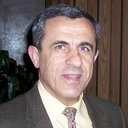Outcomes of surgical therapy for biliary dyskinesia.
Keywords
Abstract
Patients with biliary dyskinesia have biliary colic, a normal gallbladder ultrasound, and a gallbladder ejection fraction typically less than 35%. We report a retrospective review of 70 patients with biliary dyskinesia who underwent cholecystectomy. Seventy-seven percent of the patients were women. Average age was 40. The most common symptoms were right upper quadrant pain, nausea, vomiting, and fatty food intolerance. All patients underwent a cholecystokinin-hepatobiliary scan or cholecystokinin-oral cholecystogram. Average ejection fractions were 20.2% and 28.4% respectively. Average post-operation follow-up was 10.9 months. Eighty-four percent of patients (59 of 70) reported improvement at follow-up. Eight patients had ejection fractions greater than 35%; seven of them reported improvement after cholecystectomy. Eleven patients did not improve after cholecystectomy; their average ejection fraction was 25%. These patients also had atypical symptoms (mid-epigastric pain and reflux symptoms). We believe cholecystectomy is effective therapy for biliary dyskinesia. Surgical outcomes could be improved by careful histories distinguishing biliary colic from other complaints. Less reliance should be placed on the ejection fraction when the patient has biliary colic without another etiology of abdominal pain.


